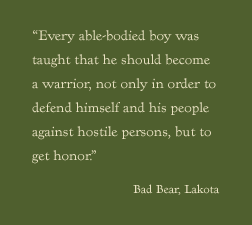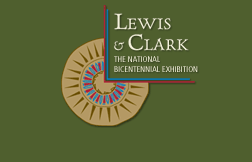
 |
INTRODUCTION TO UNIT Target Grade Level: This unit takes a sociological approach to the military interactions between the Corps of Discovery and American Indians. A sociological approach emphasizes the connection between the military aspects of a culture, in this case weaponry, uniforms, and heroic ethos, and its values and priorities. Traditional military history emphasizing tactics, strategy, and battles will not be the focus of this unit. The first lesson looks at uniform and dress and its various purposes. Military costume is analyzed in terms of symbolic meaning and as a cultural artifact. Next, weapons are examined also in terms of the cultural insights they can provide. Finally, codes of heroic and warrior behavior are compared. Throughout the unit, modern connections and points of cultural similarities and differences are emphasized. MAJOR UNDERSTANDINGS The ideals of a warrior reflect his culture. The weapons, tactics, and strategies a society uses to fight its wars reflect the society's values, its economy, and its social organization. Explore Connections to Today for this unit. ESSENTIAL QUESTIONS
KEY KNOWLEDGE OBJECTIVES Students will:
KEY SKILL OBJECTIVES Students will:
FORMATIVE ASSESSMENT SUGGESTIONS Ongoing assessments as the unit progresses will include class discussion focused on key questions, group work with presentations, pre- and post-writing assignments, research-based projects, journaling, and the construction of Venn diagrams.
|
|||
 |
 |
 |
 |
